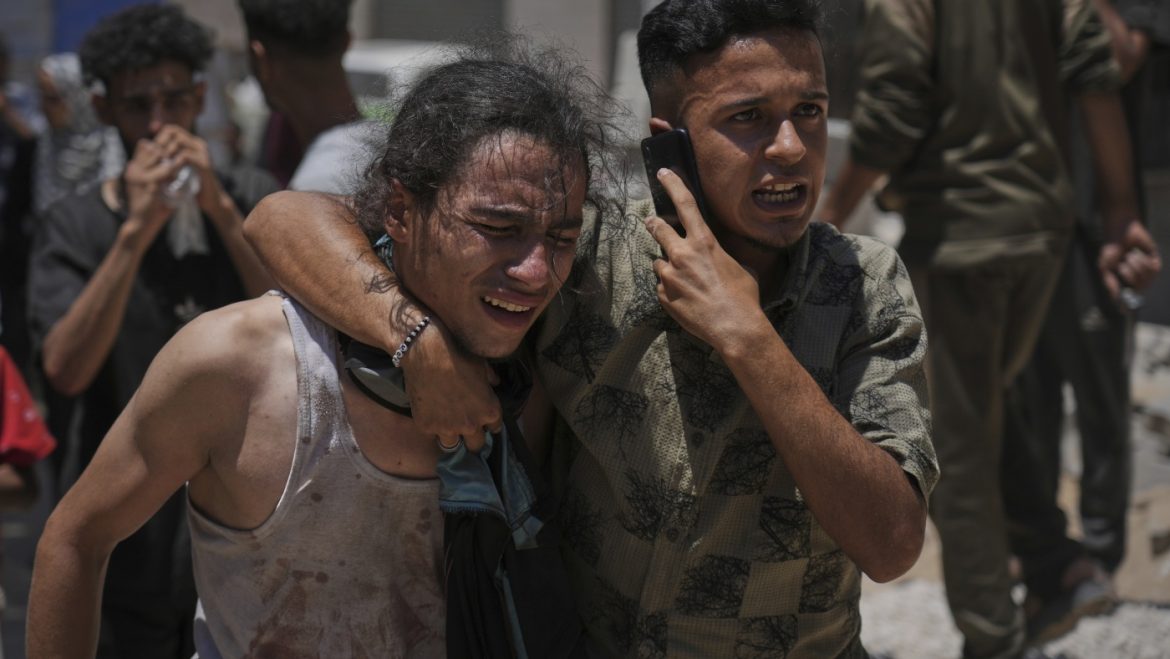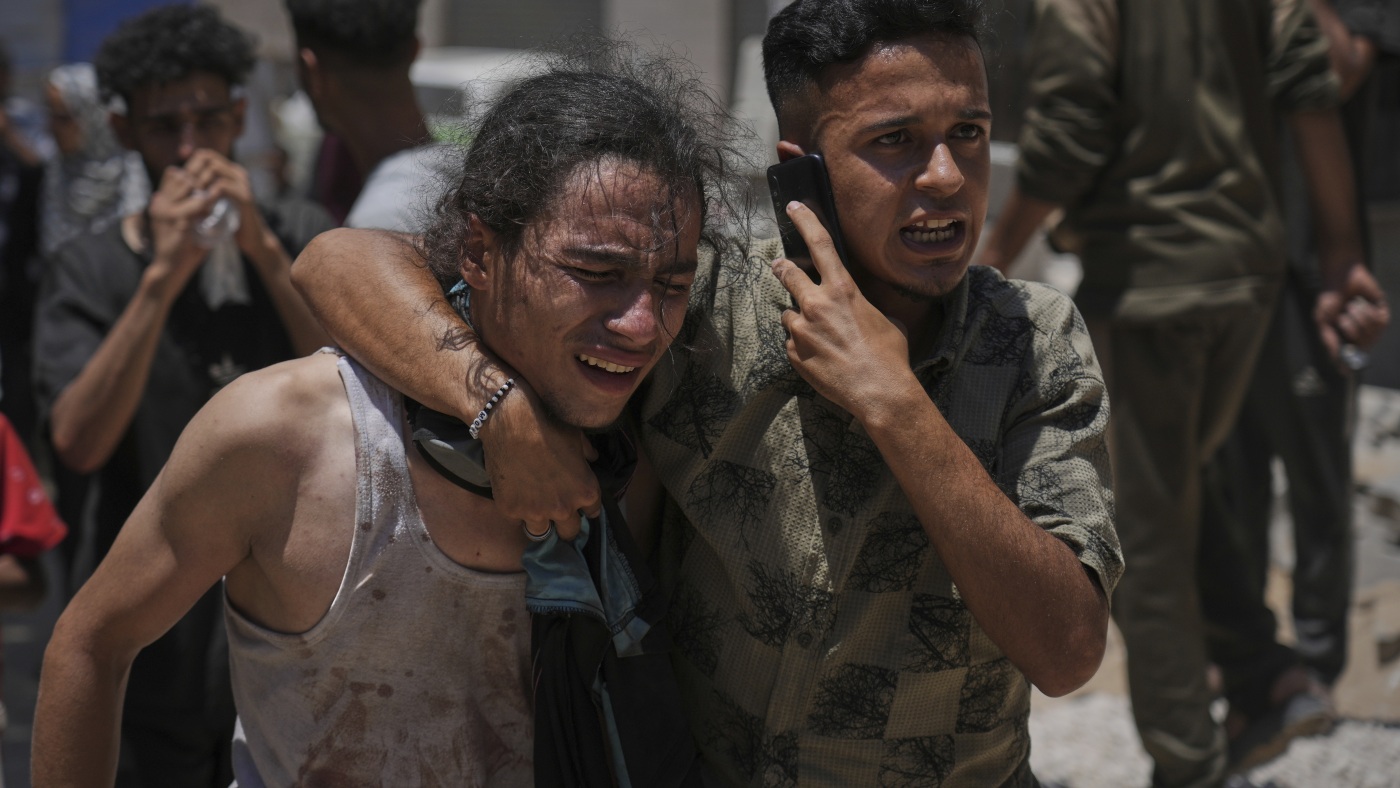The Aid Bloodbath: A Chronicle of Desperation and Death in Gaza
Introduction: A Crisis of Humanity
The ongoing conflict in Gaza has reached a critical juncture, where the lines between survival and annihilation blur. The recent surge in violence at aid distribution sites has transformed what should be lifelines into death traps. The images of desperate Palestinians, risking their lives for a morsel of food, juxtaposed with the stark reality of mass casualties, paint a grim picture of a humanitarian crisis spiraling out of control. This report delves into the harrowing accounts of these incidents, the conflicting narratives surrounding them, and the urgent need for accountability and change.
Desperate Measures, Deadly Outcomes
The Desperation of the Gazan People
Gaza, a strip of land barely 25 miles long and 7 miles wide, has been under blockade for over a decade. The recent escalation of violence has exacerbated an already dire situation. The United Nations has warned of an impending famine, with over 2 million people in Gaza facing severe food shortages. The World Food Programme estimates that 80% of the population is food insecure, and the situation is worsening by the day.
In this context, the arrival of aid convoys is met with a surge of desperation. People, driven by hunger and the fear of starvation, flock to distribution points, often in large numbers. The scenes are chaotic, with crowds pushing and shoving, desperate to secure whatever meager supplies are available. This desperation, however, is met with a brutal response.
The Deadly Encounters
Reports from Gaza detail multiple incidents where Israeli forces have opened fire on or near aid convoys and distribution points. The numbers are staggering. On a single Sunday, 85 Palestinians were killed while seeking food. Another incident resulted in 73 deaths, while a third saw 32 fatalities near a site associated with a U.S.-based aid group. These are not isolated events but part of a disturbing pattern.
The aftermath of these incidents is described as chaotic and horrific. Witnesses speak of scenes resembling massacres, with bodies strewn across the ground, the injured struggling for survival, and the air filled with panic and despair. The very act of seeking sustenance has become a life-threatening endeavor.
Conflicting Narratives and Unanswered Questions
The Israeli Perspective
Israeli officials have offered varying explanations for these incidents. Some reports claim that the military fired warning shots near aid seekers, while others cite airstrikes in the vicinity. The rationale behind these actions remains unclear, and the disparity between the accounts raises serious concerns about transparency and accountability.
One key question is whether the use of force was proportionate to the perceived threat. Were there alternative measures that could have been employed to control crowds or manage the distribution of aid? Was there a clear and present danger justifying the use of lethal force? These questions demand thorough investigation and impartial answers.
The Allegation of Forcibly Starving the Population
Adding to the complexity of the situation is the allegation by an advocacy group that the population is being “forcibly starved.” If access to food and essential supplies is deliberately restricted, the consequences for the civilian population are dire, and the moral and legal implications are profound.
The international community must demand guarantees that aid can be delivered safely and effectively, without fear of violence or obstruction. The safety and security of aid workers are paramount, and any obstruction of humanitarian efforts must be condemned in the strongest terms.
The Humanitarian Catastrophe Deepens
The Perfect Storm of Suffering
The killings near aid sites are symptomatic of a larger humanitarian catastrophe unfolding in Gaza. The combination of conflict, displacement, and restricted access to resources has created a perfect storm of suffering. The aid that does manage to enter the territory is often insufficient to meet the overwhelming needs of the population.
The psychological impact of these events on the civilian population is immense. The constant threat of violence and the daily struggle for survival take a heavy toll on mental health. Children, in particular, are vulnerable to trauma and long-term psychological distress. The wounds of this conflict will run deep, and the healing process will be long and arduous.
The Safety of Aid Workers
The incidents also raise serious questions about the safety and security of aid workers. If humanitarian actors are unable to distribute assistance without risking their lives and the lives of those they are trying to help, the entire aid operation is jeopardized. The international community must demand guarantees that aid can be delivered safely and effectively, without fear of violence or obstruction.
Beyond the Numbers: A Call for Accountability and Change
The Human Cost of Conflict
The statistics surrounding the deaths near aid sites are shocking, but it is important to remember that each number represents a human life, a family shattered, and a future extinguished. These are not simply collateral damage; they are victims of a conflict that has spun out of control, a conflict that has eroded basic human dignity and violated fundamental principles of international humanitarian law.
The Need for Accountability
The international community has a responsibility to hold those responsible for these killings accountable. Independent investigations must be conducted to determine the facts and circumstances surrounding these incidents, and those found to have committed war crimes or other serious violations of international law must be brought to justice.
The Need for Change
However, accountability is not enough. What is needed is a fundamental change in the way this conflict is conducted. All parties must adhere to the principles of distinction, proportionality, and precaution, taking all feasible measures to protect civilians from harm. The indiscriminate use of force must end, and the targeting of civilian infrastructure, including aid facilities, must be prohibited.
A Future of Hope or Continued Despair?
The Choice Before Us
The events in Gaza serve as a stark reminder of the human cost of conflict. The images of death and destruction are seared into our collective consciousness, a testament to the failure of diplomacy and the triumph of violence. The question now is whether the international community has the will and the capacity to prevent further tragedies.
The answer to that question will determine the future of Gaza. Will it be a future of hope, where peace and justice prevail, and where the basic needs of the population are met? Or will it be a future of continued despair, where violence and suffering persist, and where the dreams of a better tomorrow are forever deferred? The choice is ours, and the time to act is now.
The Unbearable Weight of Indifference
A Crisis of Conscience
Ultimately, the tragedy unfolding in Gaza is not just a crisis of logistics or security; it is a crisis of conscience. It is a test of our shared humanity, a challenge to our capacity for empathy and compassion. To stand by and do nothing in the face of such immense suffering is to betray our own values and to condemn future generations to a world of endless conflict and despair.
The weight of indifference is unbearable, and the time has come to lift it from our shoulders and embrace the responsibility of creating a more just and peaceful world. The events in Gaza demand our attention, our action, and our unwavering commitment to the principles of humanity and justice. The future of Gaza, and indeed the world, hangs in the balance.


